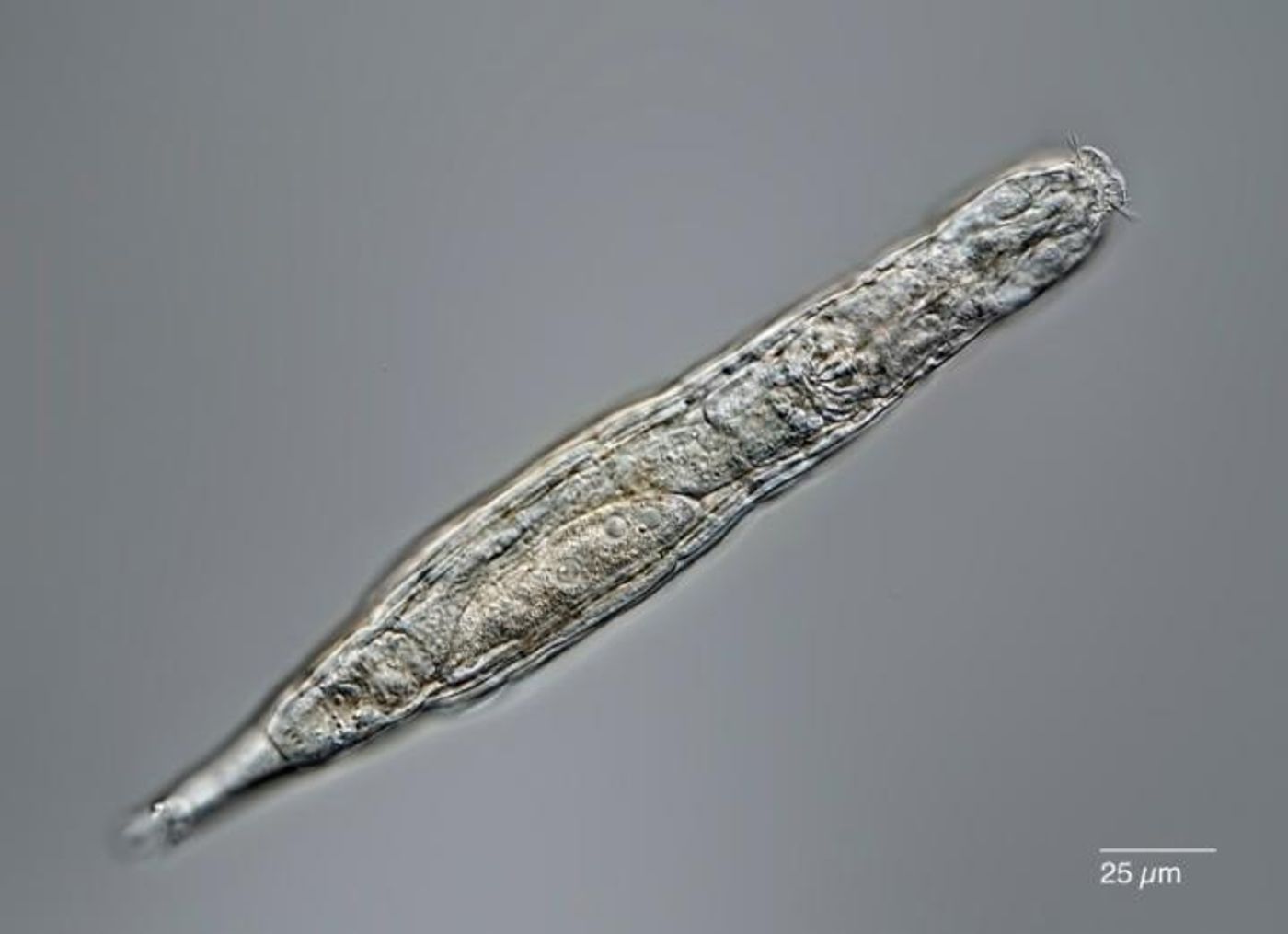A 24,000-Year-Old Rotifer From the Siberian Arctic is Alive & Thriving
Some animals are microscopic, like the bdelloid rotifer. These multicellular animals are extremely tough, and can survive starvation, freezing, drying, and a lack of oxygen. Now, scientists have unearthed a 24,000-year-old bdelloid rotifer of the genus Adineta from the Siberian permafrost. The specimen was taken back to the lab and warmed up, and it was alive.
Researchers at The Soil Cryology Lab at the Institute of Physicochemical and Biological Problems use drilling rigs to collect samples from remote locations in Siberia, and these experts are specialists at recovering microscopic organisms from ancient permafrost. Previous research from this group has identified a 30,000-year-old nematode worm and some regenerated plants that are thousands of years old. Now, their work has shown that hardy little animals can live for thousands of years under the right conditions. The findings have been reported in Current Biology.
"Our report is the hardest proof as of today that multicellular animals could withstand tens of thousands of years in cryptobiosis, the state of almost completely arrested metabolism," said study co-author Stas Malavin of the Soil Cryology Laboratory.
Other researchers have reported that frozen rotifers can survive for ten years. In this study, radiocarbon dating was used on the rotifers that were recovered from the permafrost to determine their age, which was about 24,000 years. The scientists froze rotifers and thawed them out to learn more about the process. The research suggested that rotifers were able to withstand slow freezing. Their cells may have some mechanism that is able to protect the organism during the formation of ice crystals and extended periods of time at very low temperatures.
"The takeaway is that a multicellular organism can be frozen and stored as such for thousands of years and then return back to life, a dream of many fiction writers," noted Malavin. But as organisms become more complex, he noted, "the trickier it is to preserve it alive frozen and, for mammals, it's not currently possible. Yet, moving from a single-celled organism to an organism with a gut and brain, though microscopic, is a big step forward."
Researchers are still learning more about the biochemical mechanisms that allow organisms to survive time spent on ice, and whether short and long periods have different requirements. The investigators are interested in learning more, and are hopeful that this work will provide insight into how to preserve other, more complex animals, maybe eventually including humans.
Sources: Science Daily, Current Biology









